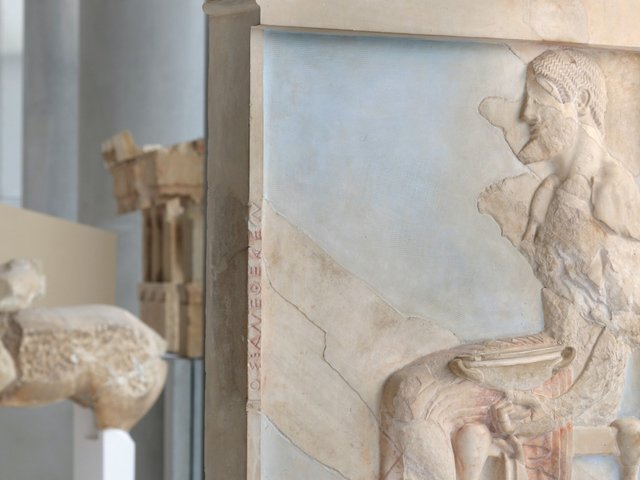The world of ancient art history is divided between those who believe that Athenian aristocrats ate and dined off crockery, and those who consider the surviving pottery to be a cheap evocation of the gold and silver wares of which a few examples have been saved from the melting pot (see www.studiavasorum.ro).
Richard T. Neer spends a substantial part of a book on style and politics in Athenian vase-painting in attempting to rebut arguments which the reviewer once put forward (with David Gill) in Artful crafts (1994) in favour of the latter view. Unfortunately he does not seem to have read the book very carefully, and to have largely depended on the reactions of reviewers. Thus, he criticises us for not having discussed the “Athenian cups” which Pindar describes as gracing the tables of Sicilian aristocrats (and which he believes to be crockery), and cites a review by Erica Simon where this apparent lacuna was first noted. A glance at our index, however, would have quickly led him (and Professor Simon) to the page where the relevant Pindar fragment is discussed in the context of Acragantine luxury (silver lekythoi and solid ivory couches), and where we suggest that the cups were of silver.
Nor does Dr Neer seem to have noticed our suggestion that the existence of at least two cups bearing the inscription “Douris egraphsen” (but unquestionably by a different hand from the bulk of the pottery vessels bearing the name Douris) points to such inscriptions (and others) being carried over from the pattern-books made for silversmiths (fifth-century pattern books—graphides—were still being used by craftsmen in Pliny’s day, and “egraphsen” can mean “designed” as well as “drew”). The structure that the late Sir John Beazley created on the basis of the surprisingly few inscriptions on pots is a flimsy one; less than a fraction of one percent of extant pots bear what have been taken to be artists’ signatures, while nearly every Impressionist painting is signed. On this evidence, no Athenian potter can ever, as Dr Neer would have it, have “organise[d] himself as a marketplace persona”.
On a more positive note, Dr Neer should be praised for having given later dates than used to be conventional to some familiar monuments and artefacts; not late enough perhaps (and he does not appear to know of Mortimer Chambers’ demonstration that an Attic inscription formerly dated stylistically to 458 BC was cut in 418 BC; the consequences are considerable).
Still, with the Athenian Treasury at Delphi now certainly built after 490 BC, things are on the slide. The Marathon mound may well be a product of the politics of Cimon, the son of the victor at Marathon. If so, the book on politics in Athenian vase-painting remains to be written. Style is a chimaera, best left to one side (and Dr Neer has some frightening pages in which he has pot-painters from Athens taking motifs from Delphi: Holman Hunt avant la lettre). It was rightly said by Wilamowitz of Winckelmann that his “history of style…is the source of the sap that has made almost every branch of our science grow and put forth leaves”. Leaves, perhaps, but little or no fruit.
Barbara Barletta attacks an old staple of archaeological scholarship, and does so very well. The balance of available evidence suggests that canonical orders did not have a long “hidden life” in wood, but that their development began not significantly earlier than the first evidence in stone.
Mary Beard’s The Parthenon is a sparkling account of a building that is perennially in the news. Anyone wanting a balanced overview of the vicissitudes that have befallen this structure and its sculptural decoration could not do better than to read this book. He will learn of the principal function of the Parthenon in antiquity, which was to house the gold and ivory statue of Athena the virgin goddess and the large number of dedications made from precious materials. On this showing, the fuss about the Elgin marbles is largely a waste of time: rather like quarrelling over a chocolate box once the chocolates have been eaten. The Parthenon is comprehensive and compact, and deserves to become the next Longitude.
o Richard T. Neer, Style and politics in Athenian vase-painting: the craft of democracy, ca. 530-460 BCE (Cambridge, University Press, Cambridge, 2002), 306 pp, 98 b/w ills, £55 (hb) ISBN 0521791111
o Barbara A. Barletta, The origins of the Greek architectural orders (Cambridge, University Press, Cambridge, 2001), 256 pp, 16 b/w ills, £47.95 (hb) ISBN 0521792452
o Mary Beard, The Parthenon (Profile Books, London, 2002), 218 pp, 24 b/w ills, £15 (hb) ISBN 186197292X
Originally appeared in The Art Newspaper Archive as 'Getting high on pots'


